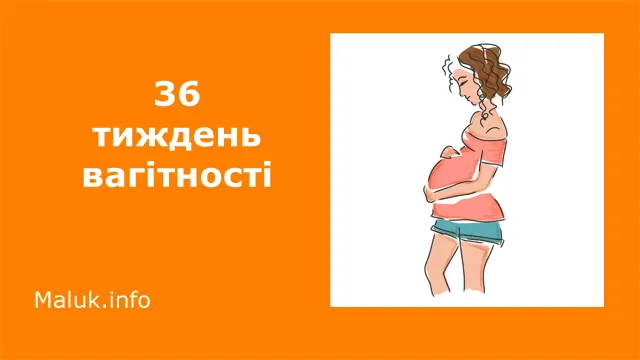Pregnancy calendar: 36th week of pregnancy
Pregnancy calendar by week. An experienced doctor tells how a child develops in the womb and what changes occur in the pregnant woman’s body. All the most important things about the 36th week of pregnancy
Changes in your body during the 36th week of pregnancy:
Therefore, the familiar feeling of anxiety and excessive excitement can often be reinforced by questions and inconsistent decisions. In the past, obstetrician-gynecologists mostly did not consider it necessary to coordinate the birth plan with the woman in labor. However, times are changing, scientific studies confirm the effectiveness of partnership between the doctor and the woman in labor. Therefore, I encourage you not to be afraid and not to be ashamed to ask questions that interest you about pregnancy and childbirth, as well as the period after the birth of a child. The best way to help yourself in such a situation is to write a birth plan. First, write down everything that comes to mind, what worries you, what worries your partner. The following were selected from the general list:
- first, questions to the obstetrician-gynecologist, questions related to the choice of childbirth, for example, partner or independent.
- choice of anesthesia (analgesia) method, for example, epidural anesthesia or no analgesia.
- choice of hospital, doctor, if possible, ward.
- secondly, make a list of things that you will need during childbirth and when the child is discharged from the hospital.
- write the options of names for a girl or for a boy on a piece of paper. Of course, friends or parents can advise you, but I advise you to make a decision yourself.
How does the baby grow?
Preferably , by the 36th week of pregnancy, the baby should gain approximately 2 kg, 700 g, and the baby can gain 30 grams per day until the birth date. If you look closely at the baby, the weight gain is most noticeable on the arms and legs, which become chubby. Perhaps the obstetrician-gynecologist congratulated you with the fact that the baby has turned upside down and the head is lowered into the pelvis. Actually, this position of the child before birth is the most classic. However, do not worry if the placement of the baby is different, under modern conditions, the doctor has many opportunities to successfully deliver even with an atypical placement of the baby in the uterus. Therefore, the baby’s head sinks into the pelvis, which means that there is even less space for the bladder and intestines – hence frequent visits to the toilet. But don’t worry, your nine-month journey will soon come to a logical end!
Author: Olga Letnyanchyk, doctor
Read also:
– Pregnancy calendar: from 1 to 40 weeks

